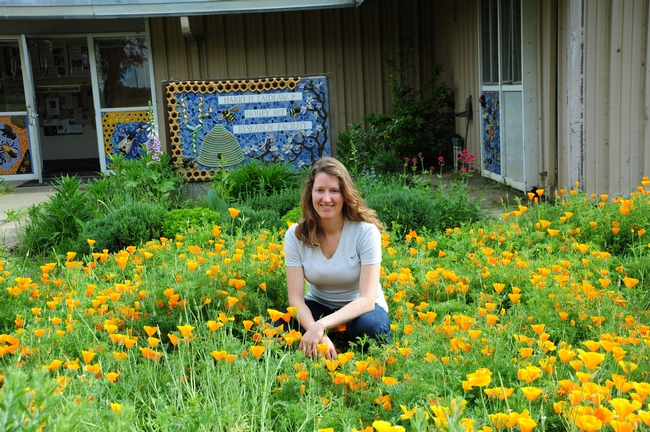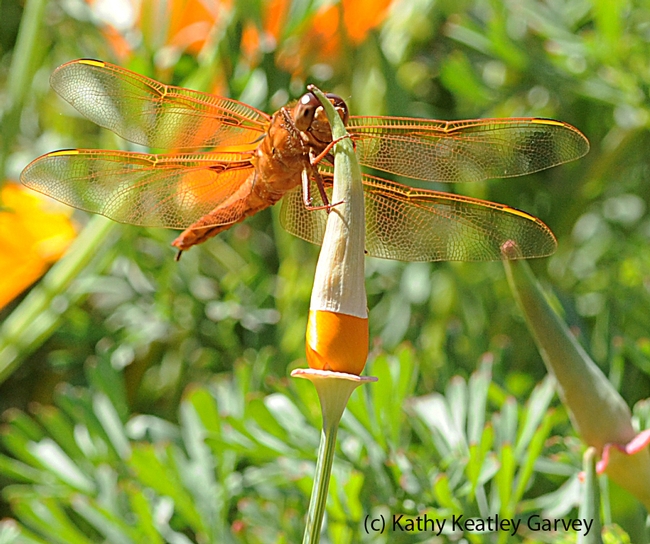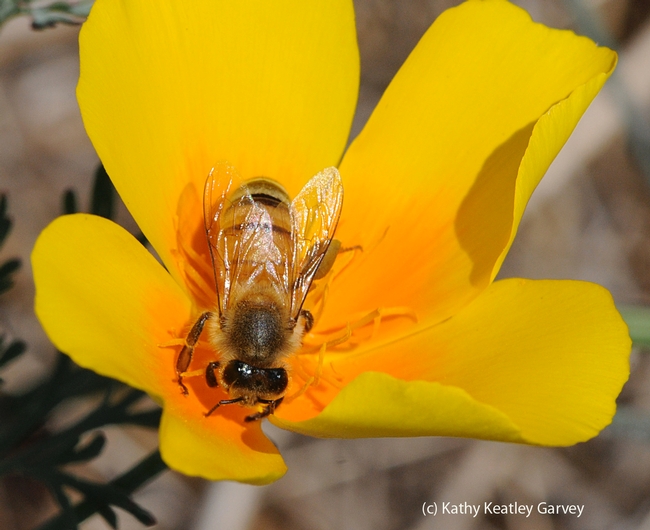
Staff research associate/beekeeper Elizabeth Frost of the Harry H. Laidlaw Jr. Honey Bee Research Facility, on Bee Biology Road, University of California, Davis, earlier this year planted a pollinator patch in front of the facility--and what an eyecatcher it is.
She selected California golden poppies, lupine and foxgloves, among other choices. When spring emerged, the Laidlaw facility never looked so brilliant! Especially in front of the Laidlaw ceramic sign created by Donna Billick of Davis.
Frost posted a "Pollinator Habitat" sign in front that reads: "This area has been planted with a range of flowering native plants to provide high quality habitat for native bees and other pollinators. To learn how you can create good habitat for pollinators, please visit www.xerces.org.
Frost, a UC Davis graduate who joined the bee lab in 2008 and worked with bee breeder-geneticist Susan Cobey, recently accepted a position on the Honey Bee Tech-Transfer Team, part of the Bee Informed Partnership. So, starting Sept. 1 Frost will be based at the Cooperative Extension office in Butte County.
What is the Bee Informed Partnership? To quote from the website, "It's an extension project that endeavors to decrease the number of managed honey bee colonies that die over the winter."
"Since the winter of 2006 - 2007, overwintering colonies in the US have died in large numbers. Affected beekeepers span the entire spectrum of the industry: migratory beekeepers to stationary beekeepers; and commercial beekeepers, part-time beekeepers, to backyard beekeepers. Migratory and stationary beekeepers alike have, on average, lost 30% or more of their overwintering colonies over the last several years. These losses are unsustainable. If they continue, they threaten not only the livelihoods of beekeepers who manage bees, but the livelihood of farmers who require bees to pollinate their crops."
Check out the Bee Informed team! And read their comments on why they like working with bees!
Meanwhile, back at the ranch...er, the Laidlaw facility...the pollinators are populating the poppies. On any given day, you can see honey bees, drone flies, hover flies, dragonflies and butterflies.
Plant it and they will come.
Attached Images:

Beekeeper Elizabeth Frost in front of the pollinator patch she planted. (Photo by Kathy Keatley Garvey)

Flame skimmer dragonfly rests on an unopened poppy. (Photo by Kathy Keatley Garvey)

Drone fly crawls up a petal. (Photo by Kathy Keatley Garvey)

Honey bee foraging on a California golden poppy. (Photo by Kathy Keatley Garvey)